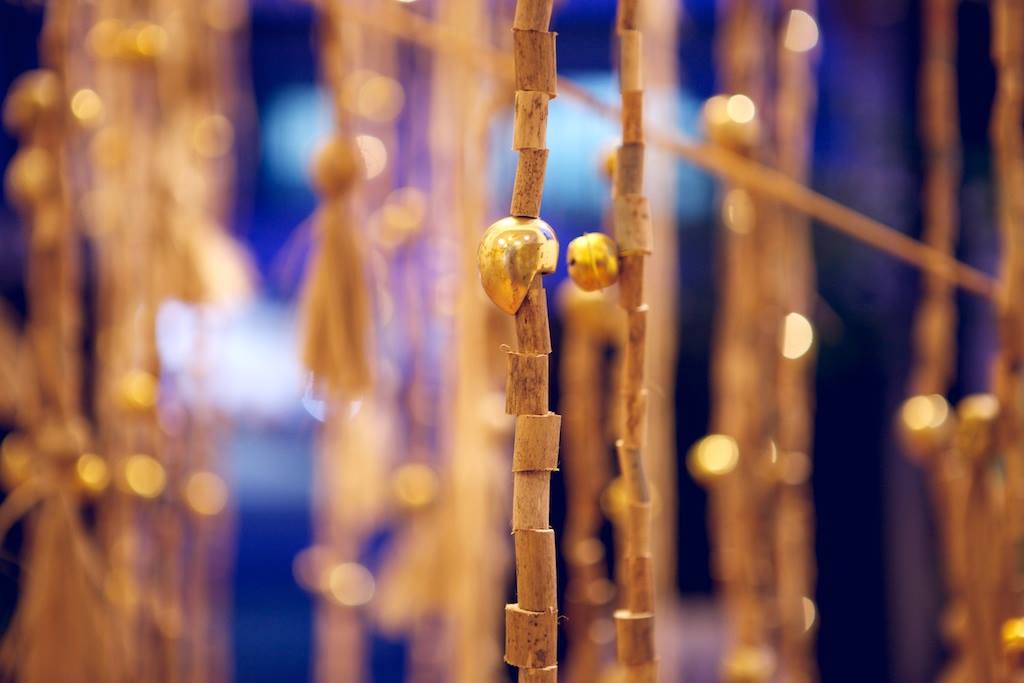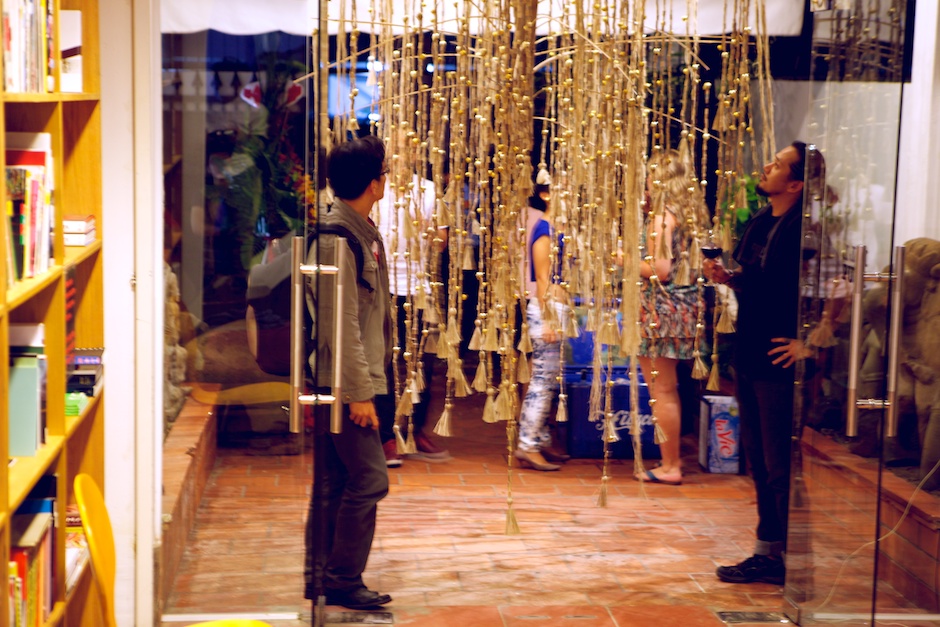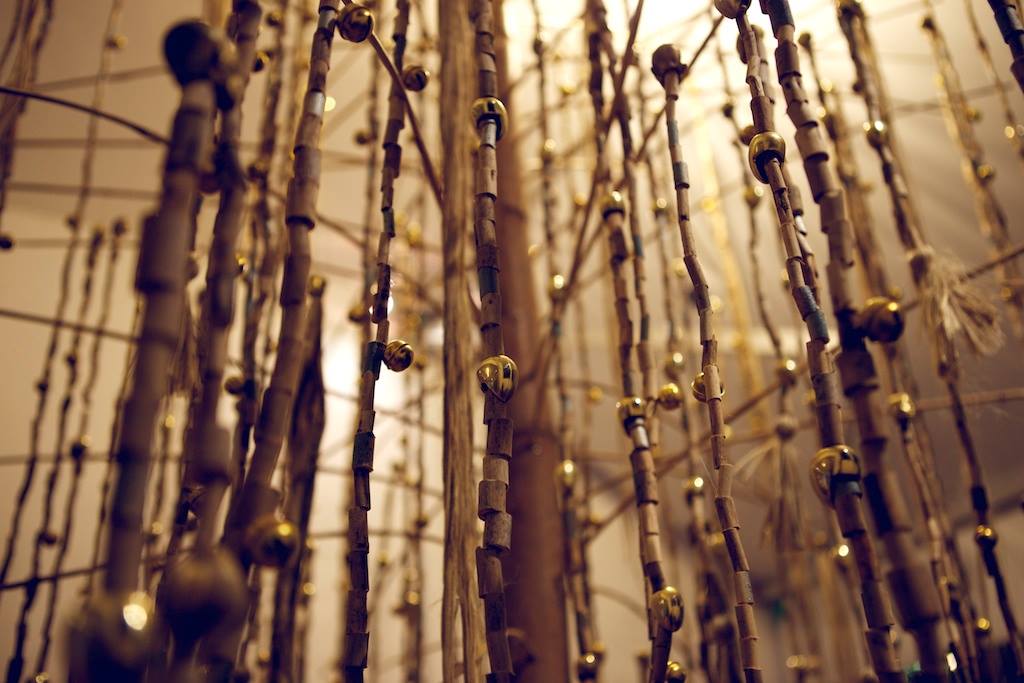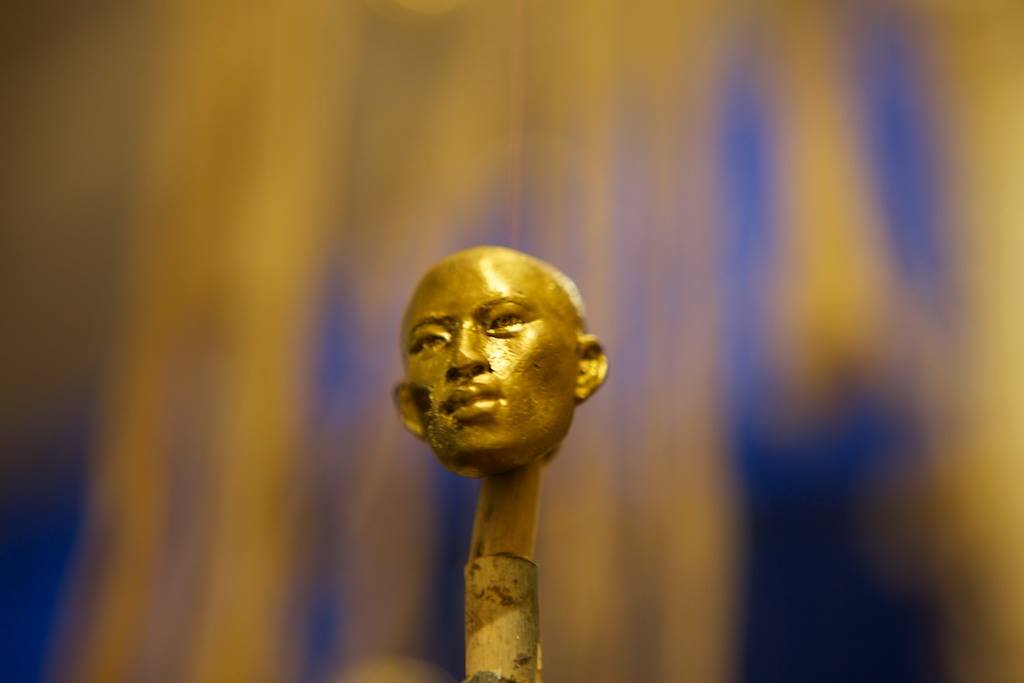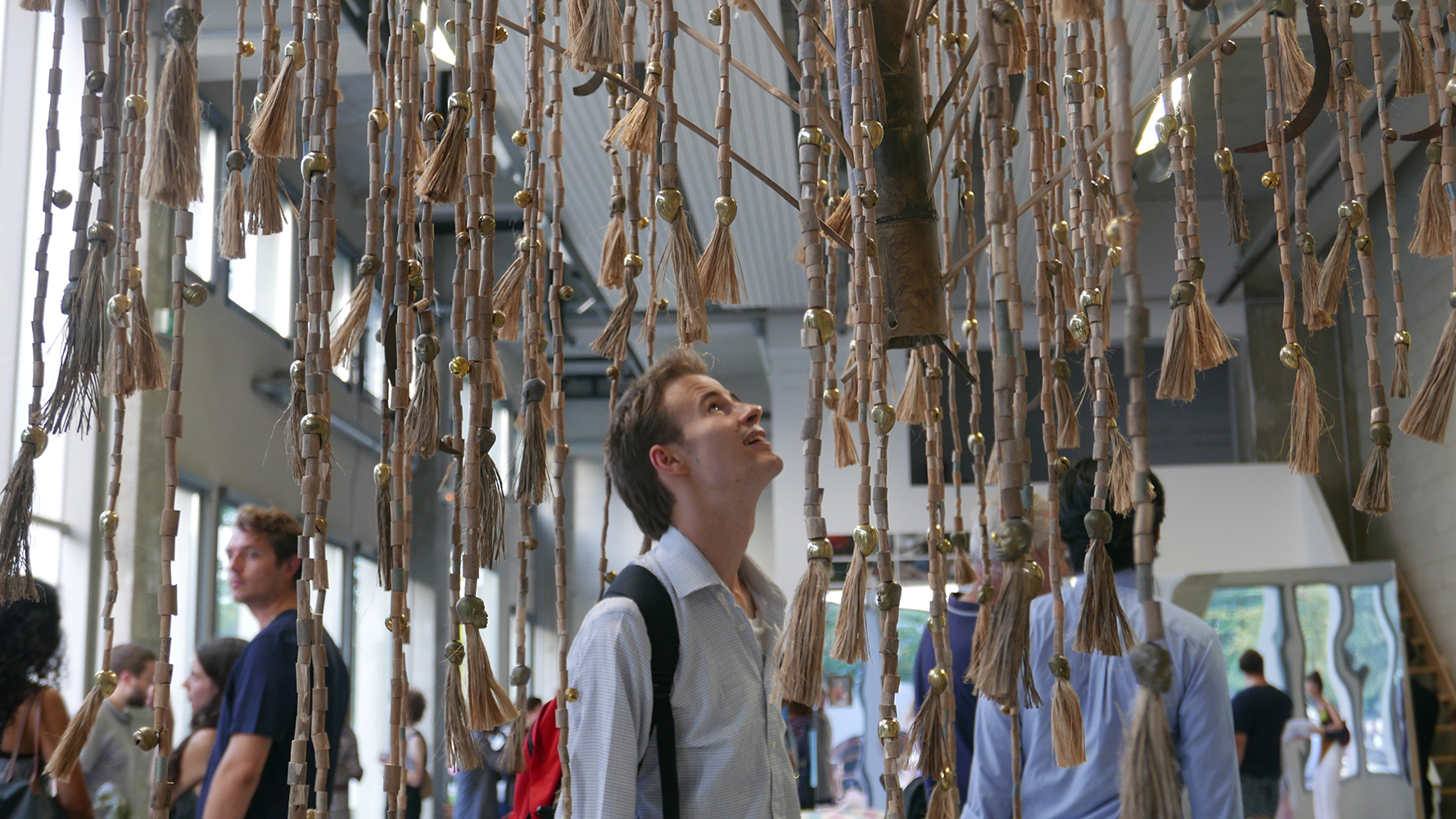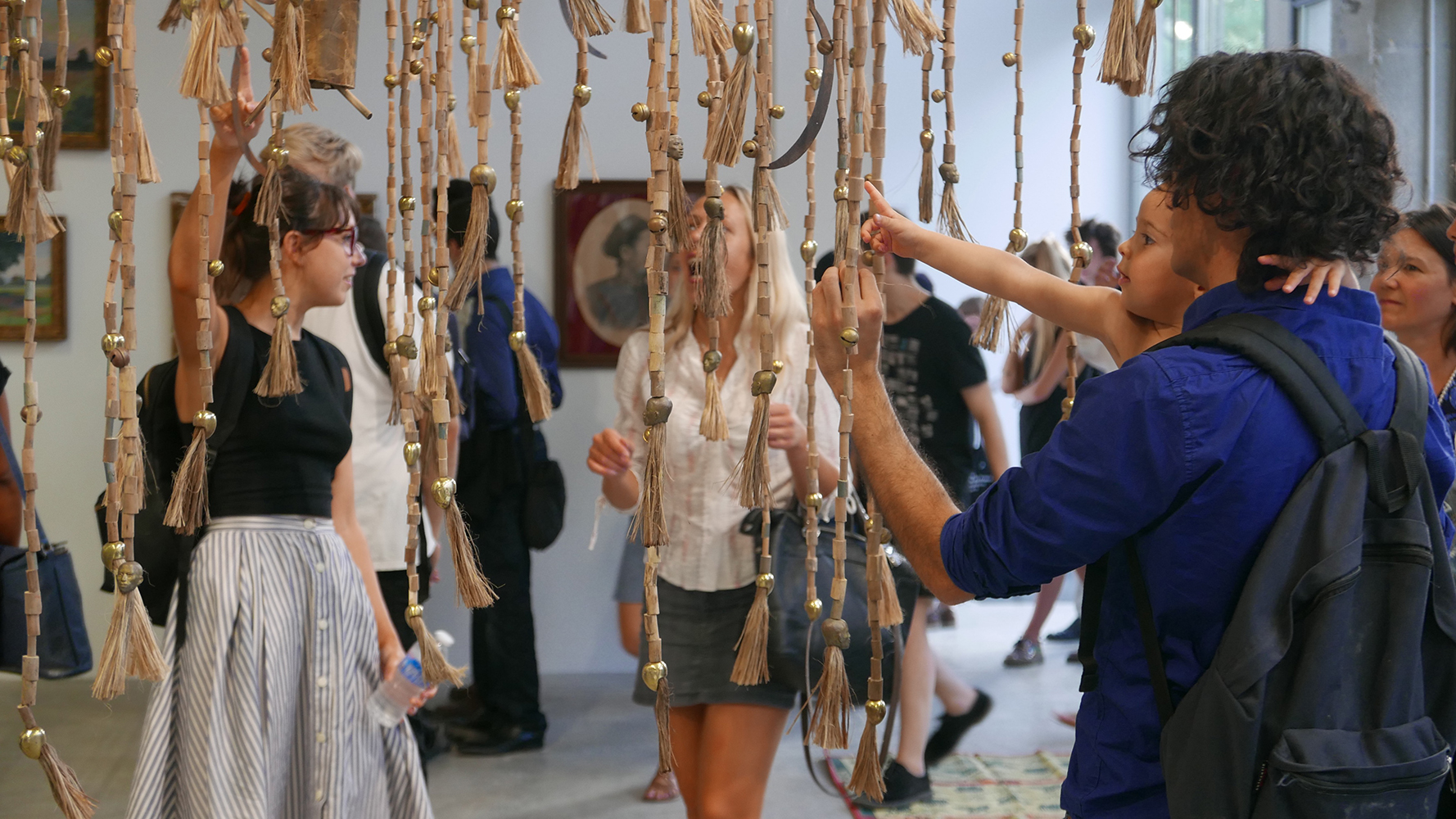Untitled (Heads)
2013
Installation
Dried shredded jute (hemp) fiber and jute stalks, bronze, thread. dimension variable
On 22 September 1940, the French signed an accord, which granted the Japanese troops the right to occupy Indochina. The occupation of Northern Indochina allowed the Japanese to block China from importing arms and fuel from French Indochina. The Japanese presence in Indochina lasted until the end of World War II. During the occupation, jute supplies from Bengal were interrupted. Jute was used to make sacks as well as gunpowder, a crucial material for the war industry. Looking for new jute supplies, the Japanese authorities forced Vietnamese farmers to uproot rice and grow jute. This was believed to be one of the main reasons for the horrific famine in North Vietnam 1945, resulting in the deaths of 2 million people.
The installation Untitled (Heads) is made from locally grown jute plant. Jute, a material that is both the cause and the witness of a tragic event, is now reincarnated with poetic meaning. I dried the jute stalks, cut them into smaller modules and then manually combined them into a structure. The structure is similar to the shape of a chandelier but is actually inspired by the Ma Mot tree, a ritualistic tree constructed by Thai minorities in Northern Vietnam for religious purposes. On the Ma Mot tree, objects such as animal bones and amulets are hung on the tree, each object representing a dead or evil spirit. The purpose of this action is to cure illness.
In a previous installment at San Art, Untitled (Heads) was placed at the entrance of the gallery space. The audience was welcome to touch, play and rotate the piece. At the end of each branch was attached a small bronze head, which was a representational portrait of a farmer that I got to know during my research. The ideal place to install this piece is outdoor or on balcony, where nature can age the piece gradually.
http://san-art.org/exhibition/right-fiction/
